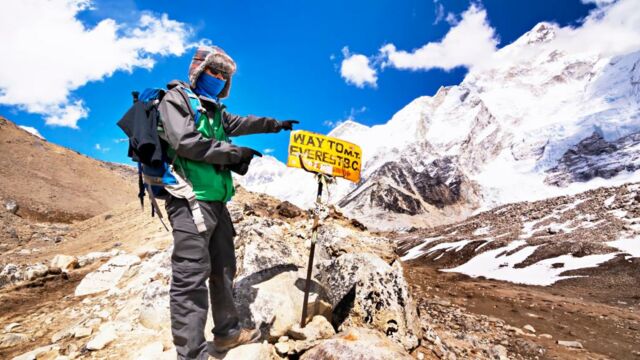This new study, carried out by researchers from the University of Washington and the University of California UC Davis, reveals that the success rate of climbing the highest peak in the world (8848 m) has doubled over the last 30 years. Between 2006 and 2019,two thirds of climbers succeeded, compared to one third between 1990 and 2005.
Discover our latest podcast
To provide this result, the scientists analysed data from the Himalayan Database, a wealth of information covering all expeditions from 1905 to spring 2020, compiled by, among others, the late Elizabeth Hawley, former Reuters correspondent in Kathmandu.
The publication's authors analysed the success and mortality rates of all first-time climbers (those climbing the 'roof of the world' for the first time) who obtained a permit for an Everest climb between 2006 and 2019. Having applied the same statistical methods in the past over the period 1990 to 2005, they were able to make comparisons.
2/ The mortality rate still remains unchanged
The overall mortality rate of about 1% has not changed. However, the number of ascents has increased significantly. Between 1990 and 2005, more than 2,200 climbers made their first attempt to reach the highest point in the Himalayas. From 2006 to 2019, there were more than 3,600.
The researchers explain these results by:
[...] better weather forecasts, the presence of fixed ropes on a large part of the route, the experience accumulated in terms of logistics and itinerary, and better use of oxygen.
The increased experience of expedition leaders and porters at high altitude may also have contributed to the increased success rate. It should be noted that while more and more climbers have reached the Nepalese summit in recent years, today's climbers are actually less experienced than those who attempted Everest in the 1990s and early 2000s.
3/ Traffic jams aren't so fatal
While heavy summit crowds can occasionally lead to fatalities, the study authors were surprised to find that they had no obvious statistical effect on the chances of success or the risk of death.
The negative effects of congestion may be mitigated by the benefits of waiting at the highest camps, and only making an attempt to climb - even in numbers - when conditions appear favourable (weather, snow...).
So finally, what do they die of? Between 1990 and 2019, 119 people died while climbing Everest in the spring. Two-thirds of these deaths were due to illness (acute mountain sickness, exhaustion, frostbite, etc.), around 25% were due to falls (into crevasses, for example) and 5% were due to avalanches, rock falls, etc.
4/ Tie between men and women
Over the two periods studied, it appears that women and men have very similar chances of success and risks of death. It is worth noting that more women have attempted the climb in recent years (14.6%) than in the previous period (9.1%). These figures suggest that men and women may have similar physiological capacities and resistances to cold and hypoxia (reduced oxygen concentration in the blood).
5/ Even at 60, it is still possible
The proportion of 'old' climbers (60 years or older) has increased, the researchers note. [...] Nevertheless, old age is not an absolute barrier to climbing: indeed, the elderly in our recent sample have significantly higher success rates than those of comparable age only a few decades ago.
Today, a 60-year-old has the same success rate (about 40%) as a 40-year-old climber between 1990 and 2005. Also, a contemporary 60-year-old climber has the same mortality rate (about 2%) as a 48.5-year-old climber in the previous period. Finally, the American scientists note that very old seniors in Japan have much higher success rates than those of comparable age from other countries.
The height of the roof under debate
However, there is not one word in the study about the actual altitude of Everest. Nepal says 8848 metres, which includes the ice at the summit, and China says 8844.43 metres. Chinese scientists went up there at the end of May to carry out new measurements. The date of publication of the results is not known, according to AFP, but China and Nepal have agreed to make a joint announcement.















